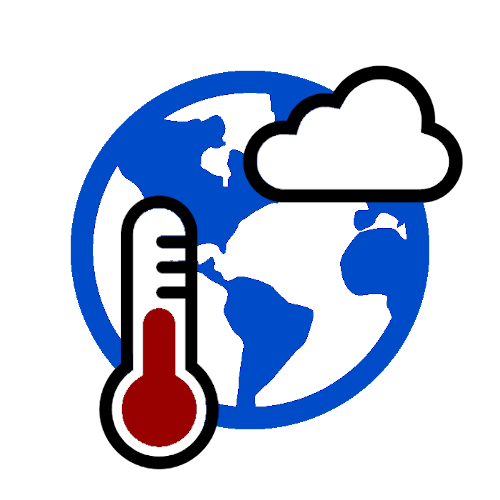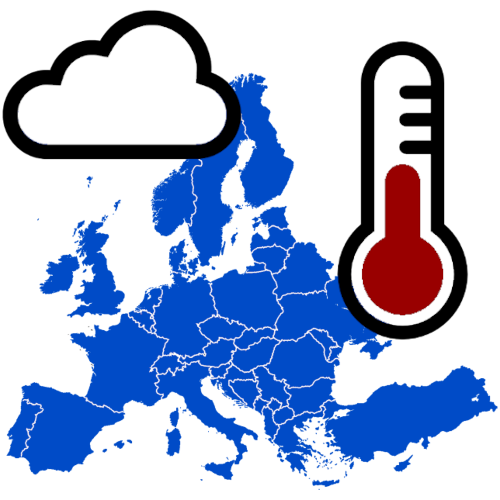The Future Weather Generator is a Java app for researchers and building design professionals. It morphs present-day hourly EPW files used in dynamic simulation to match climate change scenarios and the urban heat island effect.
The app is free, open-source, and cross-platform. Researchers can use the app as a standalone tool or integrate it into their research code. Building design professionals can also use this app to create future weather data to evaluate a building’s energy performance.
The Future Weather Generator is now developed and maintained by the CURA Lab at the University of Coimbra.
Currently, Future Weather Generator has implemented the following general circulation models’ experiments to predict the impact of climate change:
- Baseline: 2000 (1985-2014).
- SSP1-2.6, SSP2-4.5, SSP3-7.0, and SSP5-8.5.
- Timeframes: 2050 (2036-2065) and 2080 (2066-2095).
- Monthly changes: Mean and standard deviation of the thirty-month differences between the present-day and future timeframes.
- Interpolation: Inverse Distance Weighting (Haversine formula).
- CMIP6 GCM Models:
- BCC-CSM2-MR [Ref]: 51,200 points (160 lat. by 320 long.)
- CanESM5 [Ref]: 8,192 points (64 lat. by 128 long.)
- CanESM5.1 [Ref]: 8,192 points (64 lat. by 128 long.)
- CanESM5-CanOE [Ref]: 8,192 points (64 lat. by 128 long.)
- CAS-ESM2.0 [Ref]: 32,768 points (128 lat. by 256 long.)
- CMCC-ESM2 [Ref]: 55,288 points (192 lat. by 288 long.)
- CNRM-CM6.1 [Ref]: 32,768 points (128 lat. by 256 long.)
- CNRM-CM6.1-HR [Ref]: 259,200 points (360 lat. by 720 long.)
- CNRM-ESM2.1 [Ref]: 32,768 points (128 lat. by 256 long.)
- EC-Earth3 [Ref]: 131,072 points (256 lat. by 512 long.)
- EC-Earth3-Veg [Ref]: 131,072 points (256 lat. by 512 long.)
- EC-Earth3-Veg-LR [Ref]: 51,200 points (160 lat. by 320 long.)
- FGOALS-g3 [Ref]: 14,400 points (80 lat. by 180 long.)
- GFDL-ESM4 [Ref]: 51,840 points (180 lat. by 288 long.)
- GISS-E2.1-G [Ref]: 12,960 points (90 lat. by 144 long.)
- GISS-E2.1-H [Ref]: 12,960 points (90 lat. by 144 long.)
- GISS-E2.2-G [Ref]: 12,960 points (90 lat. by 144 long.)
- IPSL-CM6A-LR [Ref]: 20,592 points (143 lat. by 144 long.)
- MIROC-ES2H [Ref]: 32,768 points (128 lat. by 256 long.)
- MIROC-ES2L [Ref]: 8,192 points (64 lat. by 128 long.)
- MIROC6 [Ref]: 32,768 points (128 lat. by 256 long.)
- MRI-ESM2.0 [Ref]: 51,200 points (160 lat. by 320 long.)
- UKESM1.0-LL [Ref]: 27,648 points (144 lat. by 192 long.)
- Allows the user to create an ensemble from user-selected models.
‘Future Weather Generator Europe Ed.‘ covers Europe and utilizes CORDEX CMIP5 EU-11 RCM models. The characteristics are:
- Baseline: 1990 (1976-2005).
- RCP 2.6, RCP 4.5, and RCP 8.5.
- Timeframes: 2050 (2036-2065) and 2080 (2066-2095).
- Monthly changes: Mean and standard deviation of the thirty-month differences between the present-day and future timeframes.
- Interpolation: Inverse Distance Weighting (Haversine formula).
- CORDEX CMIP5 EU-11 GCM-RCM pairings:
- Allows the user to create an ensemble from user-selected models
In addition, it includes the possibility to add the effect of urban heat island effect based on the following characteristics:
- Summer and winter daily maximum and minimum air temperatures averaged between 2004 and 2018.
- Temperature differences between the Local Climate Zones (LCZ) of the EPW and the target urban area.
- Relative humidity is recalculated according to the morphed temperature using psychrometric functions.
There is also ‘Future Weather Generator PT Ed.‘, which covers Portugal’s mainland and utilizes the following regional climate model:
- Baseline: 2005 (1995-2014).
- SSP2-4.5, SSP3-7.0, and SSP5-8.5.
- Timeframes: 2055 (2046-2065) and 2090 (2081-2100).
- Monthly changes:
Median of the twenty months in the timeframe.
Median of the five hottest months from the timeframe.
Median of the five coldest months from the timeframe. - RCM model:
- WRF: 8,400 points (120 lat. by 70 long.)

Future Weather Generator
v4.0.2

Europe Ed.
(CORDEX EUR-11)
v2.0.2

PT Ed.
v0.1.4